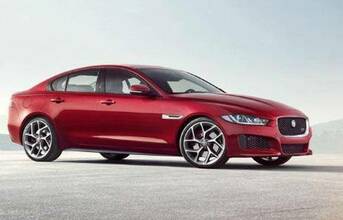
So our research team is looking at the potential for a range of driver monitoring technologies to give the car enough information to support this decision. If the car detects severe health issues, or simply how alert the driver is, then the car could take steps to ensure the driver is focussed enough on the driving task to take over."
Monitoring the physical health of the driver could not only detect the onset of sudden and serious illness that may incapacitate the driver, but also allow the car to monitor driver stress levels. This would then allow the car to help reduce stress, for example by changing mood lighting, audio settings and climate control.
Predictive Infotainment Screen with mid-air touch
Jaguar Land Rover is working on new technologies that increase the speed and efficiency of the interaction between the driver and the infotainment screen. The aim is to reduce driver distraction by minimising the amount of time the driver's eyes are on the screen.
Dr Epple: "The driver will instinctively look at the infotainment screen or dashboard when pressing buttons to select navigation, music or the telephone. It's intuitive. So our research is looking at how we could take a current infotainment screen and increase the speed and efficiency of this interaction to minimise the time the driver's eyes are away from the road and their hand is off the steering wheel."
Our Predictive Infotainment Screen prototype uses cameras embedded in the car to track the driver's hand movements and this enables the system to predict which button the driver intends to press. This allows successful button selection to take place in mid-air, which means users wouldn't have to touch the screen itself. In user trials this increases the speed of successful button selection by 22 per cent and therefore reduces the amount of time the driver is looking at the screen with their eyes off the road.
Continued to next page


























